Scope of Research
I conduct research in the general area of Digital Twin. I work in Joannes Westerink’s Computational Hydraulics Lab and Clint Dawson’s Computational Hydraulics Group. I focus on geospatio-temporal domains and both inorganic and organic materials systems. I provide highlights of my research in each of these areas below.
Geospatio-Temporal Domains
STOFS-2D-Global Development
STOFS-2D-Global is NOAA’s global surge and tide operational model. Navigate to the Computational Hydraulics Lab’s STOFS-2D-Global shadow model. This is where we stage new developments targeted for operations at NOAA.
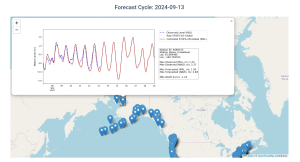
Correcting a High-Fidelity Hydrodynamic Model in Real-Time with Transformers
Read Preprint
There are several sources of error in hydrodynamic drivers including (but not limited to) poor mesh resolution, limited topo-bathymetric descriptions, inadequate or erroneous parameterizations, omission of salient physical processes, and poor meteorological forcing. We came up with a quick way to correct for these errors wholesale in the ADCIRC-driven STOFS 2D Global with transformers. In particular, we make use of physics-based dynamic covariates to help the transformer correct throughout the forecasting horizon.
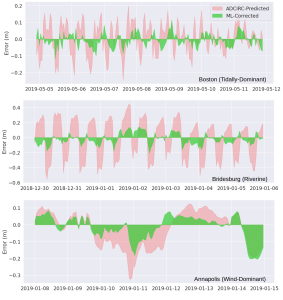
Producing Probabilistic Storm Surge Guidance
View Poster from NOAA’s 2023 UIFCW
Forecasting hurricane-induced storm surge is a task replete with uncertainty. This uncertainty mainly flows down from atmospheric modeling activities. We force our high-fidelity hydrodynamics driver, ADCIRC, with atmospheric forecasts, and our goal is to propagate the aforementioned uncertainty through this driver to produce localized probabilistic storm surge guidance in near-real-time. Guidance for Hurricane Ian (2022) is given below.
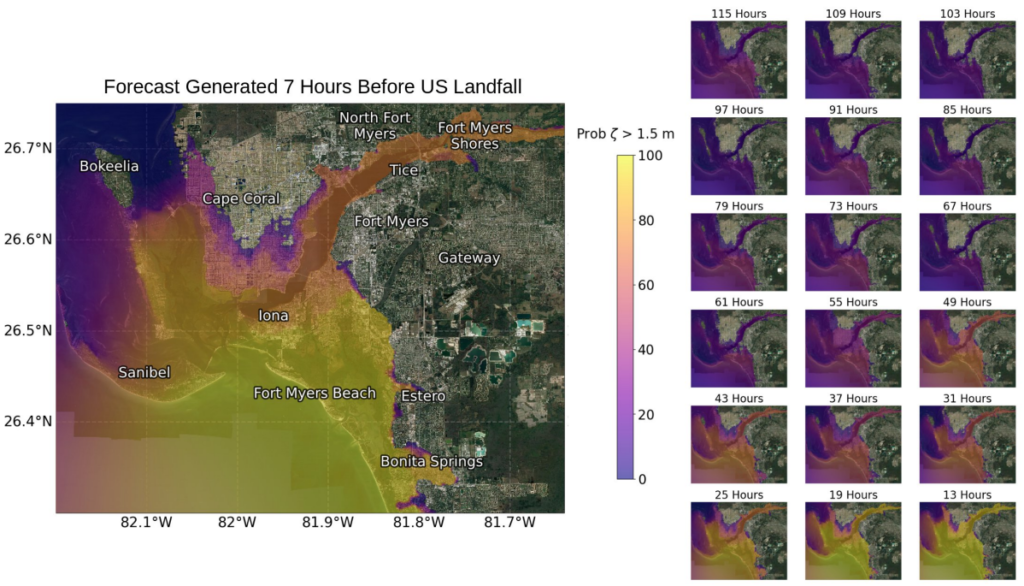
Inorganic Materials Systems
Process Modeling of Lack-of-Fusion Porosity in Additively Manufactured Metals
Read Technical Report
Lack-of-Fusion (LoF) porosity in additively manufactured materials systems tend to be large and crack-like. The process model given in the NASA technical report linked above details a 3D CAD-based LoF porosity process model for integration into FE models.
Prediction of Grain-Average Elastic Strains Using Crystal-Plasticity Finite-Element Method
Read Paper
View Presentation
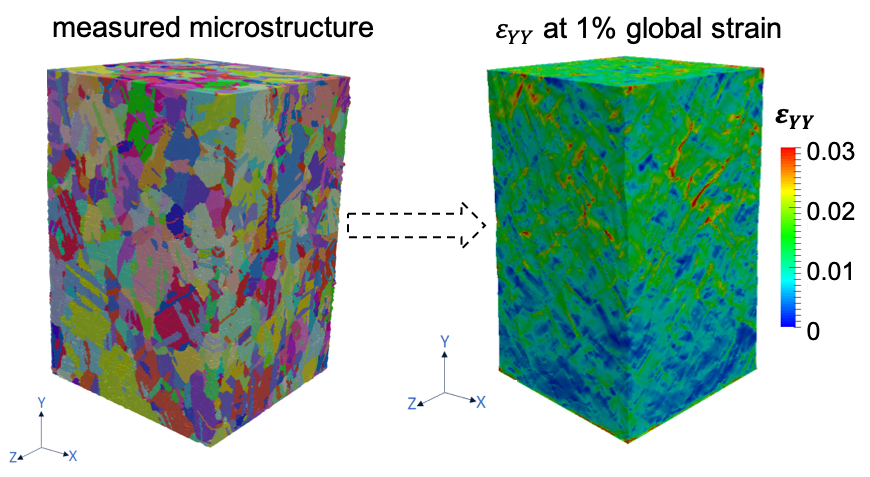
This work was in response to the AFRL Additive Manufacturing Modeling Challenge Series. Crystal plasticity was applied to a measured Ni-based superalloy microstructure. Results were compared to measurements from far-field HEDM. Largest deviations were associated with intermittent plasticity events.
Lifing Capability of Additively Manufactured Ti-6Al-4V
Read Paper
This work was conducted in collaboration with NASA Langley. At Notre Dame, we performed LCF tests, conducted characterization, and ran some exploratory 2D FE simulations. Results indicate that pore clustering, in addition to pore shape and position, dictate the fatigue life of the specimens.
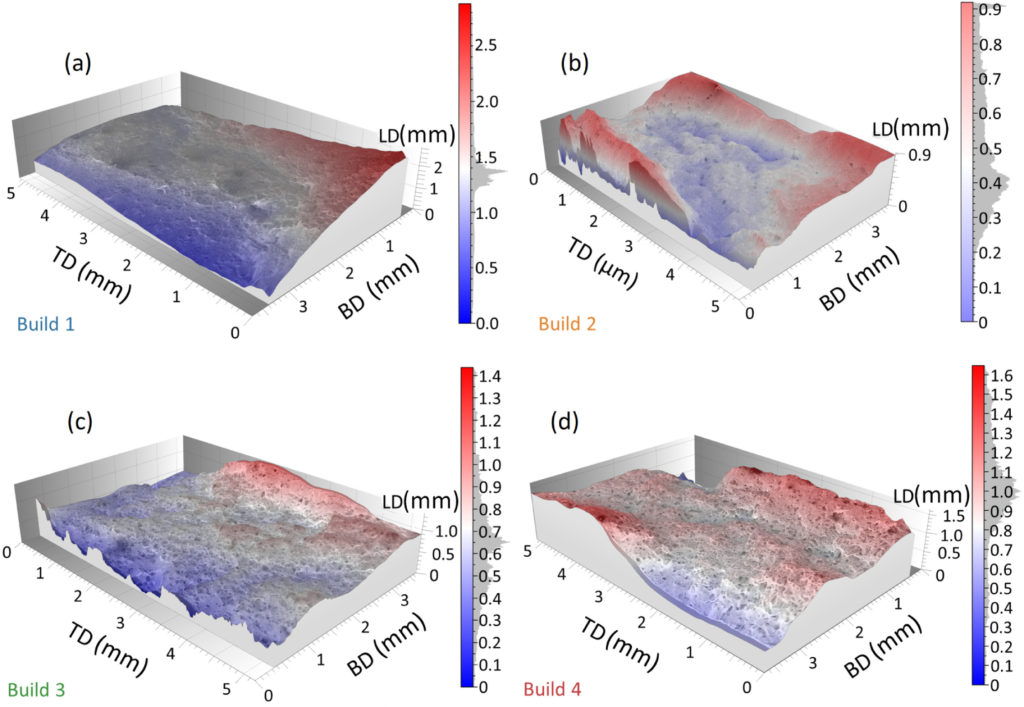
Characterizing Intermittent Plasticity Events in a Metallic Polycrystal
Read Paper
This was research conducted to quantify spatially and temporally the frequency of intermittent plasticity events in IN625.
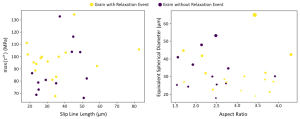
Organic Materials Systems
Quantifying the Response of Low-Frequency-Ultrasound-Mediated Biofilms
Read Paper
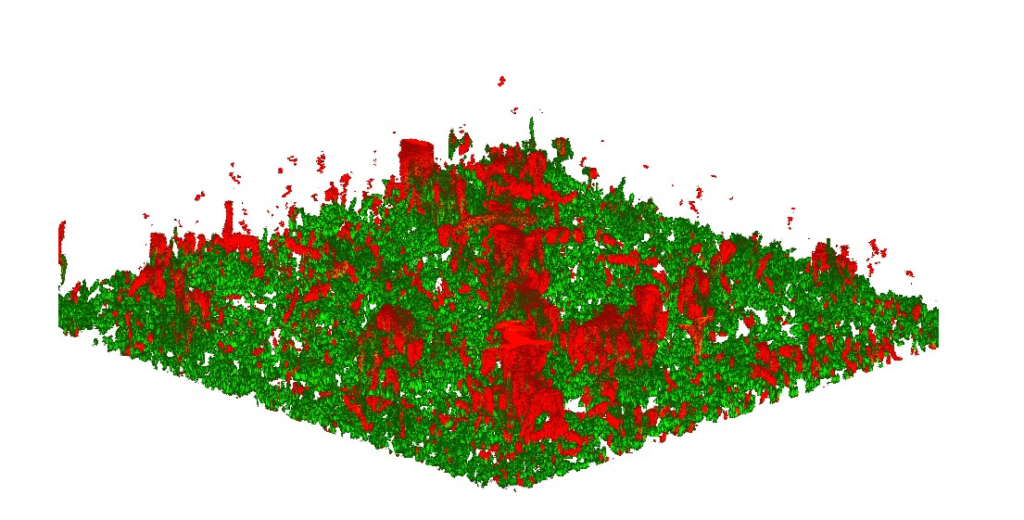
This research interrogates the feasibility and effectiveness of using low frequency ultrasound to manage pulmonary exacerbations caused by biofilms in respiratory inflammatory diseases. The image above is a 3D reconstruction of a stained biofilm (Pseudomonas aeruginosa) imaged from a confocal microscope. Red indicates cell death.
We are also engaged in modeling the action of low frequency ultrasound on biofilms. Linked below is a protoype simulation of a biofilm undergoing mechanical deformation while interacting with tracer particles.
View Video
Inferring the Mechanical Properties of the SARS-CoV-2 Virion
Read Paper
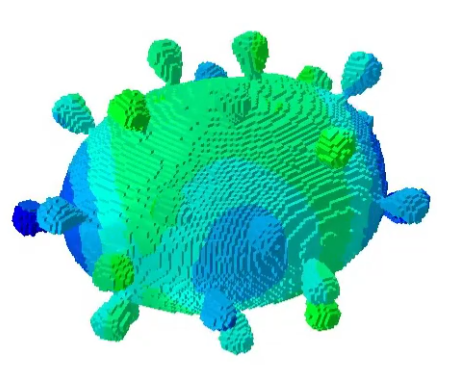
Research is currently being conducted to quantify the resonant frequencies of the SARS-CoV-2 virion and model its mechanical response to compression. The image above is from a frequency analysis in ABAQUS indicating the deformation corresponding to one of the virion’s natural modes. The model was created by reconstructing the measurements given by Yu et al. The reconstruction code can be downloaded here.